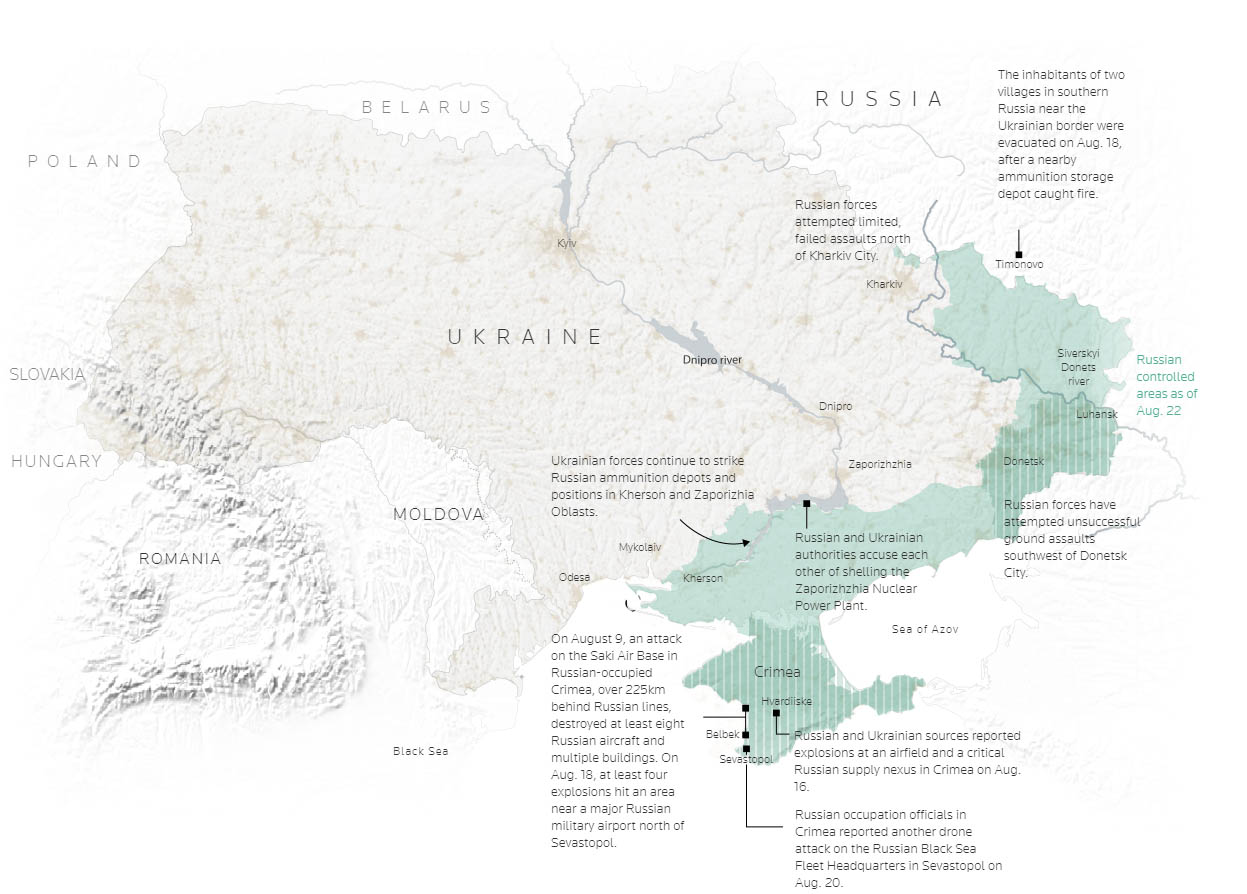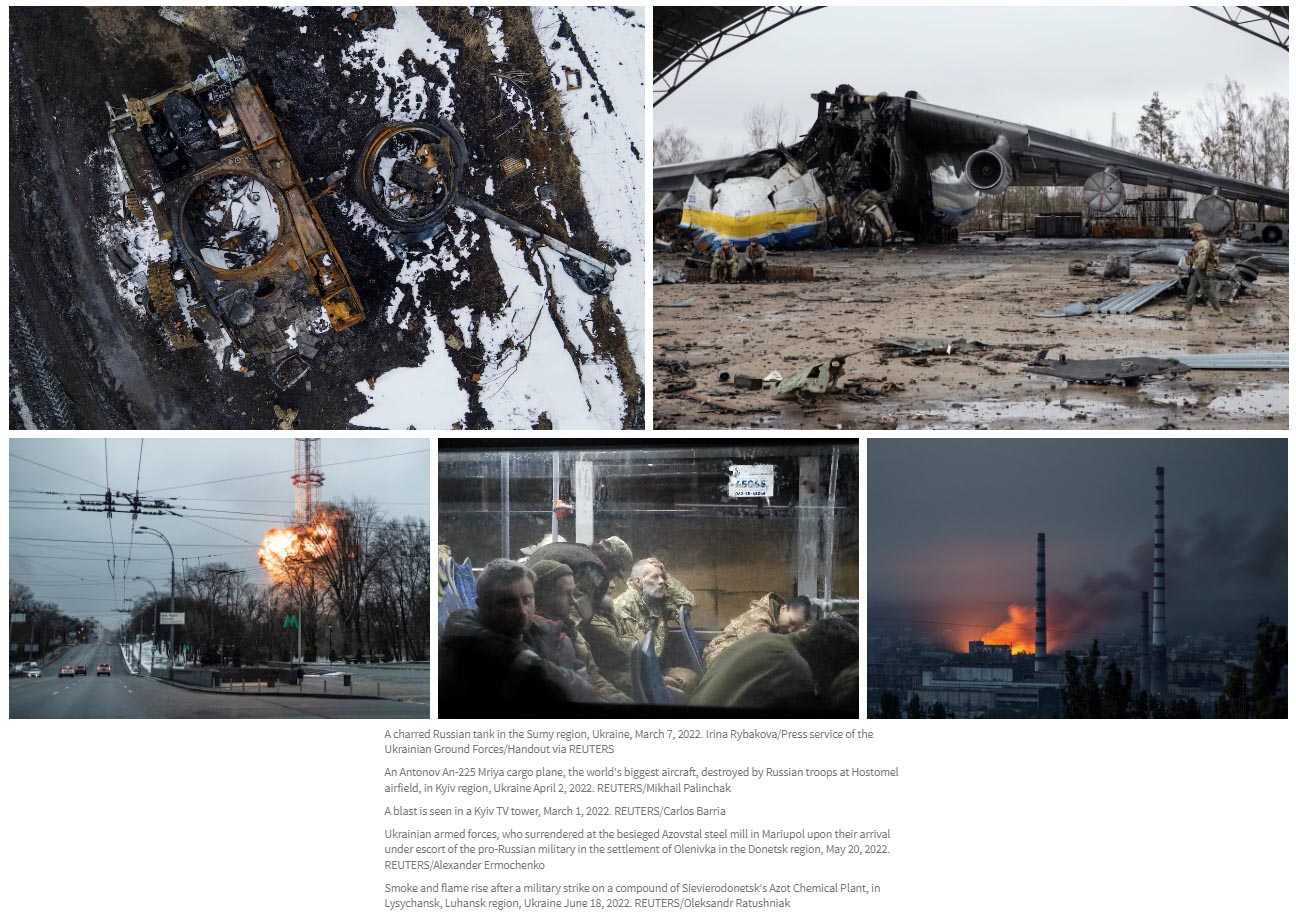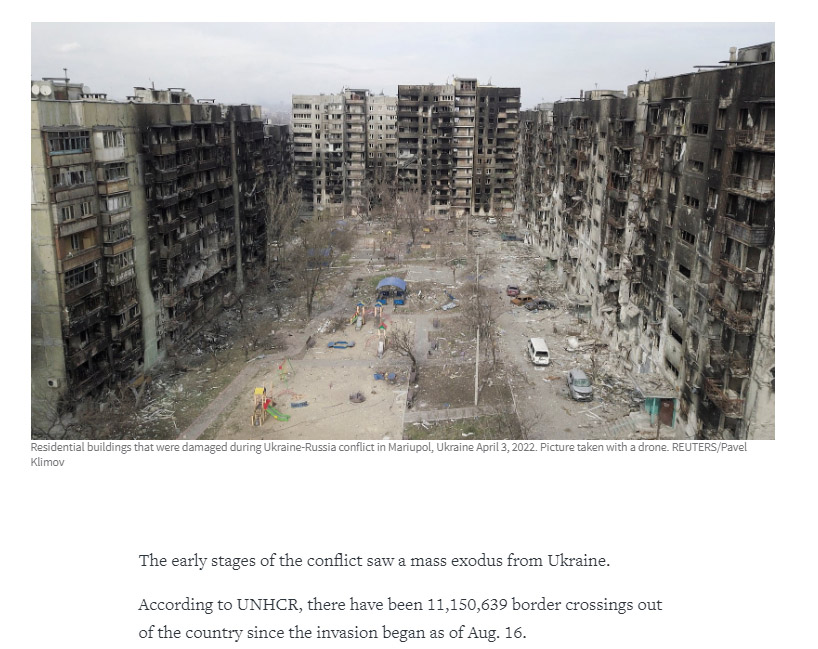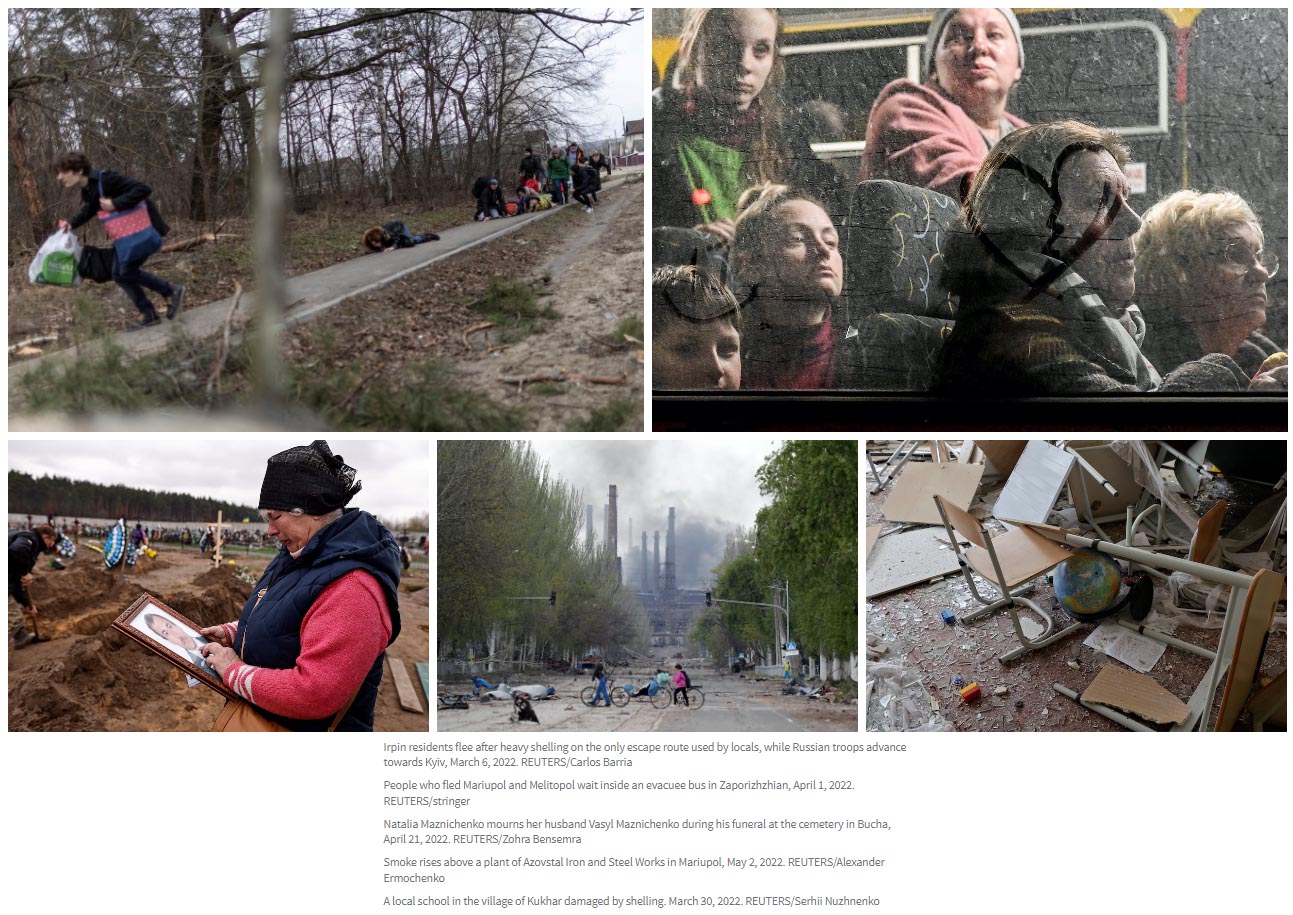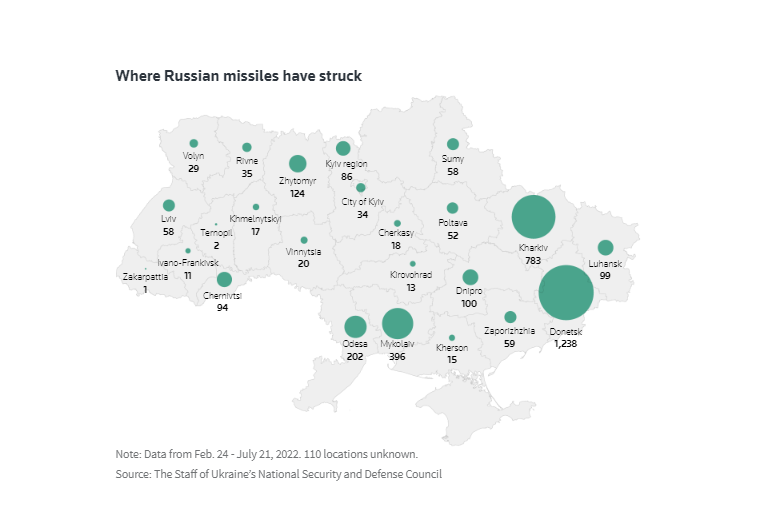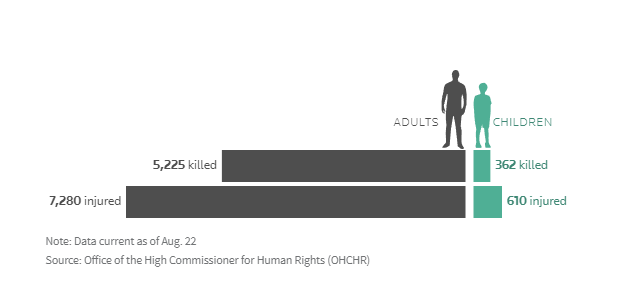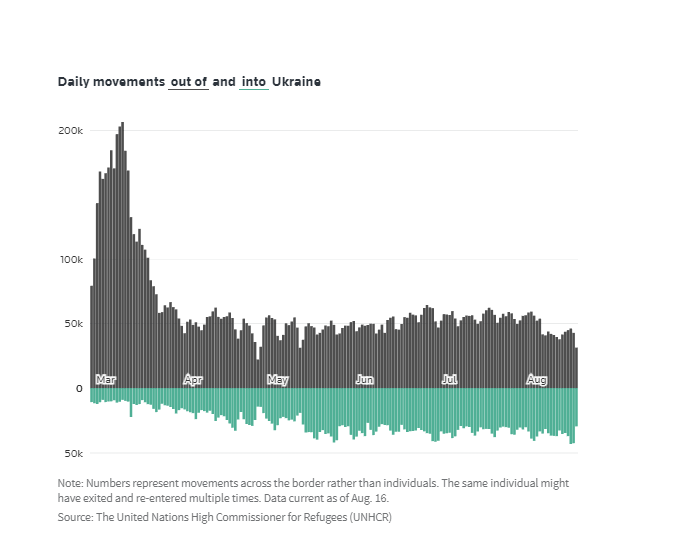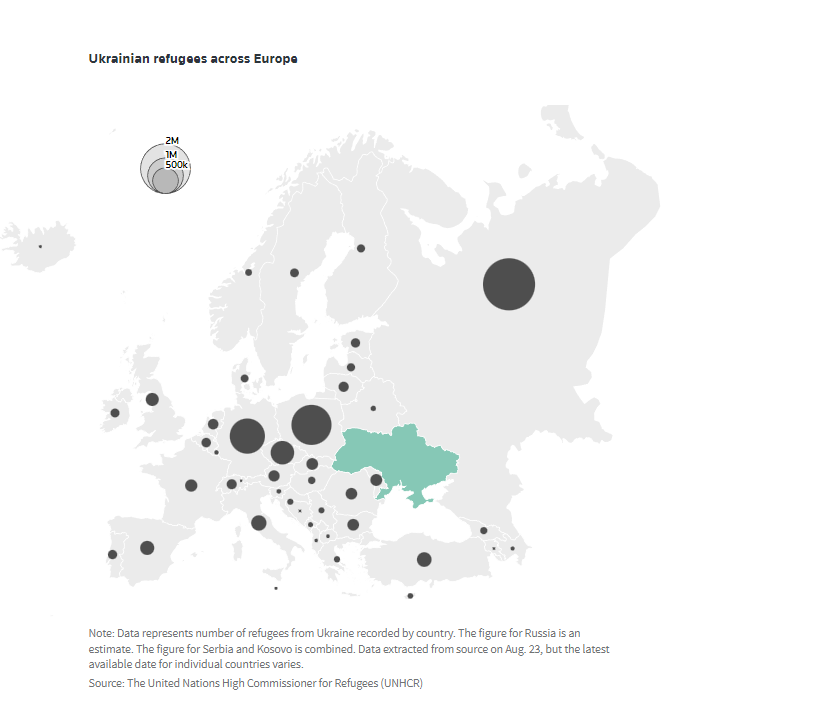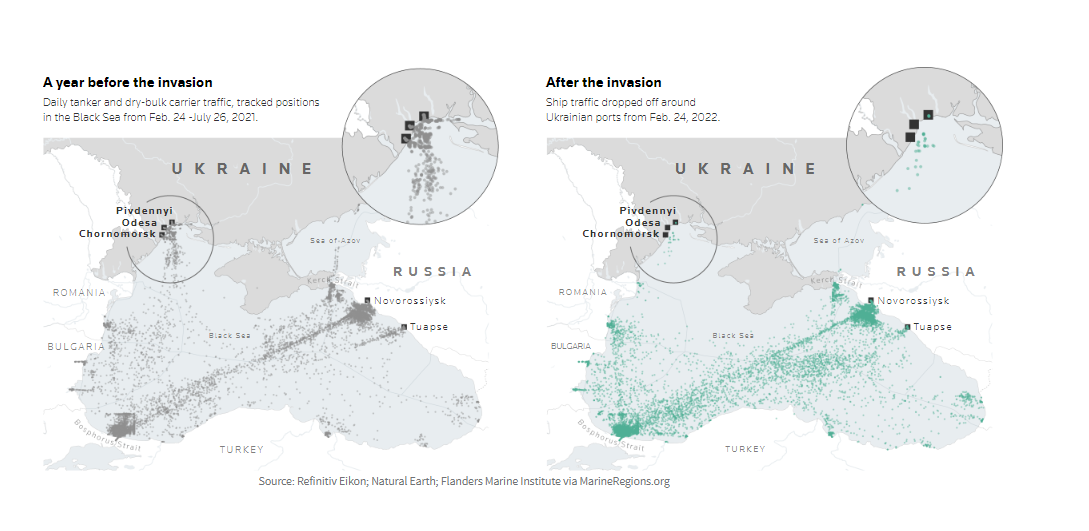This week marks six months since Russian forces rolled across Ukraine’s borders in the largest military invasion in Europe since World War Two.
Since then, tens of thousands of people have been killed, millions have fled and cities have been reduced to rubble by Russia’s bombardment.
Moscow calls its campaign a “special military operation” to demilitarise Ukraine and protect Russian-speaking communities. Ukrainian president Volodymr Zelensky said Russia had “embarked on a path of evil.”
After Russian forces failed to overrun the country on three fronts, Moscow has claimed territorial gains in eastern Ukraine and created a land bridge between separatist regions in the Donbas and the Crimean peninsula it illegally annexed in 2014.
But Ukraine’s military, supported by weapons and supplies from Western allies, including at least $9.1 billion in security assistance from the United States, has claimed numerous victories and frustrated Moscow’s wider ambitions.
While Moscow's ground assault stalled, it has waged a devastating assault on Ukraine from the air.
Exclusive data provided to Reuters by Ukrainian officials showed there had been at least 3,654 missile strikes across the country between the start of the invasion and July 21.
Ukraine says those strikes have often targeted civilian infrastructure. Moscow denies that and has claimed, without providing evidence, that some attacks had been staged by Ukrainian forces.
On Monday, the head of Ukraine's armed forces said almost 9,000 Ukrainian military personnel had been killed in the war. Russia has not said how many of its soldiers have been killed, though U.S. intelligence estimates that some 15,000 have been killed so far.
Throughout the conflict, the toll on Ukrainian civilians has been severe.
According to the UN High Commissioner for Human Rights (OHCHR), at least 5,587 civilians have been killed and 7,890 injured since the start of the invasion, though OHCHR believes the actual figures are likely much higher.
Most of those killed or injured were the victims of explosive weapons such as artillery, missile and air strikes.
The high number of civilian casualties includes some Ukraine and Western allies allege were the victims of war crimes, a claim Moscow denies.
Human Rights Watch investigator Richard Weir said: “What we’ve seen here is pretty strong indications that a number of willful killings or murders took place,” referring to bodies found with their hands tied after Russian forces retreated from towns on the outskirts of Kyiv in early April.
Mariupol, a once-prosperous southern port, was destroyed by Russian forces over three months of what the Red Cross called “hell.” Ukraine says tens of thousands of civilians died, with food, water and medical supplies cut and continuous bombing trapped many in basements. The United Nations says the toll is unknown.
The early stages of the conflict saw a mass exodus from Ukraine.
According to UNHCR, there have been 11,150,639 border crossings out of the country since the invasion began as of Aug. 16.
At least 6,657,918 refugees have fled from Ukraine to Europe, according to UNHCR.
While the majority of refugees initially fled to neighbouring countries, many have since moved on to other parts of Europe.
Around two-thirds of refugees from Ukraine expect to stay in their host countries until hostilities subside and the security situation improves, a survey by UNHCR found.
Over 6.6 million people remain internally displaced in Ukraine, according to UNHCR.
The war in Ukraine has also contributed to a global food crisis.
The halt in Ukrainian exports following the outbreak of the conflict pushed the Food and Agriculture Organization's (FAO) food price index, which tracks international prices of the most globally traded food commodities, to its highest point in March since records began in 1990.
Russia’s blockade of Ukrainian ports in the Black Sea stranded an estimated 22 million tonnes of grain in Ukraine as of May.
Moscow has denied responsibility for the food crisis, blaming Western sanctions for slowing its own exports and Ukraine for mining the approaches to its ports.
An agreement, brokered by the United Nations along with Turkey, was reached last month to unblock exports from three Ukrainian ports amid fears that the loss of Ukrainian grain supplies would lead to severe food shortages and even outbreaks of famine in parts of the world.
Six months in, there is still no end in sight for the war in Ukraine.
Both sides are entrenched along the eastern front, though counter-attacks have reached deeper into Russian-occupied territories, including Crimea.
Ukraine issued dire warnings about a frontline nuclear power station, the Zaporizhzhia complex, where it said it believed Moscow was planning a "large-scale provocation" as justification to decouple the plant from the Ukrainian power grid and connect it to Russia's.
Russian President Vladimir Putin accused Ukraine of shelling the complex, risking a nuclear catastrophe.
Besides the human losses, Ukraine has lost control of around 22% of its land to Russia since the 2014 annexation of Crimea, according to Reuters calculations and its economy will contract by 45% in 2022, the World Bank and International Monetary Fund have estimated.
Western sanctions against Russia have been the biggest shock to the country’s economy since the 1991 collapse of the Soviet Union. It has been excluded from Western financial markets, most of its oligarchs are under sanctions, and it is experiencing problems acquiring some items such as microchips.
The invasion and Western sanctions on Russia led to steep rises in the prices of fertilizer, wheat, metals and energy, feeding into an inflationary wave that is crashing through the global economy.
Graphs and pictures below.
